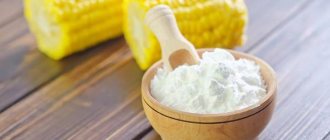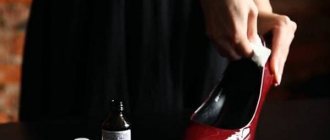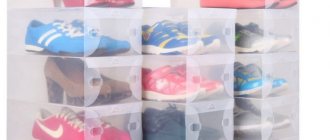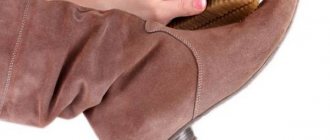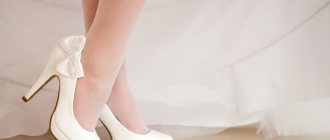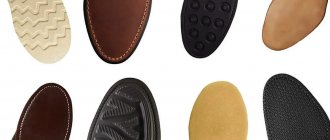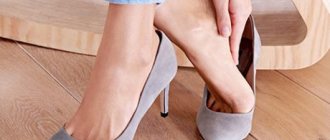What tools will be useful
To make shoes shine, remain soft and smooth, you need different brushes, creams and impregnations. Here is the minimum set.
- The cleaning product is foam, leather shampoo, or at worst regular soap.
- Cream - it contains oils that soften the material. A cream made from natural ingredients does not harm the skin, but cheap products contain “chemistry” that over time disrupts the structure of the skin. There are colorless creams or with coloring pigments - then they must be selected to match the color of each pair.
- Wax - can easily replace cream; shoe wax contains natural beeswax and oils.
- Impregnation is a spray with water-repellent and dirt-proof properties that helps shoes not get wet or deteriorate from moisture.
- Polish is a silicone-based product that is used to rub shoes to add shine. However, silicone is not very good for the skin.
- Brushes are needed to clean shoes from dirt and dust. For smooth leather, a brush with soft bristles is suitable; for nubuck and suede there are special brushes with bristles and rubber “lint”, which are used to clean greasy areas and lift the lint.
- Eraser - useful for nubuck and suede, it can be used to remove dirt.
- Spacers are devices for drying and storing shoes, helping to maintain their shape. Wooden ones are better than plastic ones because they absorb moisture and odors.
- Shoe horn - this helps you put on your shoes without crushing the heel. The heel counter often supports the entire upper structure of the boot or shoe, so that once the heel is damaged, the shoe quickly loses its shape.
- Rags - old towels, T-shirts, socks - this is where they come in handy.
Storing winter items. Instructions for use!Recommendations for preparing winter clothes for storage in the spring and summer. Read more |
Where to store shoes
A shoe cabinet or shoe rack is the optimal solution where you can store all types of shoes. At the same time, such a cabinet does not occupy a large area and eliminates the need to search for the right pair, because all products will be stored in one place. A variety of models will make it easy to choose the desired design and style.
By the way, you can make a shoe rack yourself, for example, from fruit boxes. In addition, you can use an old sideboard, old bookshelves or an unnecessary bookcase as a shoe rack.
Many people are interested in the question of where and how to store shoes if there is little space at home. In this case, it is not necessary to use a whole closet, sideboard or chest of drawers. Shoe shelves, racks or stands will help you store your shoes compactly and conveniently. Do not install devices high so that you can quickly find and conveniently get the pair you need.
The most common way to store shoes are boxes, which can be easily placed in a wardrobe, compartments in a closet or regular wardrobe, or placed on racks. If you have a lot of boxes, be sure to label each one with what is stored there.
This will speed up the search for the right pair. By the way, you can take a photo of the product and stick the photo on the box. This will not only make your search quick and simple, but will also decorate the box and become an original design idea. By the way, if there is not enough space, shoe boxes can simply be placed under the bed.
Today, modern, original ideas for storing shoes are appearing, including hanging structures. These can be stands made of pipes, special fabric pockets, rails and hooks. In addition, you can organize storage space in an ottoman or cabinet, which stands in the hallway and opens.
It is better to store high boots hanging in the closet. This method saves space, since boxes of such shoes take up a lot of space. In addition, this storage method will preserve the material from cracks and creases. If you can’t hang the boots, put cardboard supports in the tops that will keep their shape.
How to prepare shoes “for service”
- It is not recommended to process a pair immediately after purchase - let it calmly wait in the box for its time. But as soon as you are ready to put on your shoes for the first time and go out into the world, you need to prepare a pair. Treat the surface of leather shoes with wax or cream, especially carefully along the seams and the junction of the upper and sole.
- After a couple of hours, when the cream is absorbed, you can apply a moisture-proof spray: it should be tested on an inconspicuous area - say, on the inside of the heel. The spray should not change the color of the shoes. But if you trust your cream or wax, you can do without impregnation. After complete drying, wipe the shoes with a rag until they shine.
— If your pair is not made of leather, but of suede, nubuck or leatherette, simply treat it with a suitable waterproof spray.
The material of the product dictates the storage conditions
When using bulky boxes or organizers to place shoes, there are a few rules to remember.
- Suede does not tolerate any proximity, so it is better to allocate a personal box for shoes made of this soft and capricious material.
- Fabric shoes, since they easily absorb moisture, are usually stored separately from leather ones.
- Leather products do not like elevated temperatures, so they require periodic ventilation.
Shoes will be more preserved if you put paper or fabric between shoes of even the same pair.
Also, do not neglect periodically checking the storage for the presence of moths.
How to save a couple after getting wet
The most common problem in autumn, and sometimes in winter, is that boots and shoes get wet. Ideally, it’s good to have spare shoes so you can change into them and put the damaged pair in order in a day or two.
First of all, take out the insoles (and it’s better not to buy shoes with insoles glued to the sole - this is low-tech and perhaps the manufacturer has something to hide). Insoles can be dried on a radiator, and it is better to do this regularly, but shoes - under no circumstances. Even a hairdryer and hot air from a vacuum cleaner are not recommended - the material can dry out, become hard and begin to leak water.
Wipe your shoes or boots from dirt, fill them with napkins or install form holders in them and place them in an open place. You can place a sock filled with rice, silica gel cat litter, or even sawdust inside. In addition, this will help get rid of the unpleasant odor. When the shoes are dry, treat them with cream or wax.
A mess in the house = a mess in the head, or What is the cause of the mess?Is the clutter in your apartment or desk related to personality problems? And how serious is this problem? Read more |
How to care for your shoes
Leather, eco-leather, nubuck, suede are porous materials, they easily absorb dirt, and salt, which is sprinkled on sidewalks in winter, is harmful to any surface. Therefore, clean your shoes when you return home - every day or when they become dirty.
Leather shoes. Dirt is removed with a damp sponge and soapy water or leather foam. The sponge should not be wet, because the skin should not be wetted again. The only thing worse than a wet sponge is a stream of tap water. After drying, the pair is polished with wax or cream, special attention is paid to the seams and the junction of the upper and sole.
Suede and nubuck. Just blot your shoes with a rag and let them dry. It can be cleaned of dirt only with a special brush and in a dry state. Suede should be cleaned with a moderately hard brush, nubuck with soft bristles. An eraser and rubber brushes are also suitable for these shoes. Clean suede shoes against the grain, avoid circular and chaotic movements. To make dirt stick less, apply a dirt- and water-proof impregnation.
Faux leather . Wipe the shoes with a damp sponge and soapy water, and then dry with a rag. When the shoes are dry, you can treat them with an eco-leather product with an antistatic agent so that they do not become electrified and do not attract dust. But rubbing with a greasy cream or a product based on alcohol and acetone is not recommended.
Patent leather. Wipe the pair with a damp, soapy sponge, then with a rag. After complete drying, treat with polish: it simultaneously cleans, adds shine and softness, smooths out small scratches and protects against small cracks. You cannot apply polish with a brush; it is better to work with a soft shoe sponge, flannel or cotton pads.
Sport shoes. Synthetic shoes can be soaked in soap and water and washed in a basin or washing machine without spinning at 30-40 degrees for about half an hour. But if the sole is not sewn, but glued, it is better not to do this - a simple wipe with a damp soapy sponge will suffice. If the pair has leather or suede inserts, it is better to clean it by hand.
Preparation before treatment
Treatment even with expensive special means may be useless if the product is not prepared for long-term storage. That is, wash, dry and air.
Follow these simple tips on how to properly store shoes at home:
| Image | Preparation |
| Rule 1: Remove contaminants. Shoes need to be cleaned depending on the surface material:
| |
| Rule 2: remove stains and salt stains. Procedure:
| |
| Rule 3: Wash your insoles. Remove the insoles and wash them yourself using a sponge and detergent. This will eliminate the unpleasant odor from active wear. |
To lubricate the inner surface: 3 products
Treat the inside surface so that the smell does not intensify during seasonal storage.
| Photo | Instructions |
| 1. Potassium permanganate solution. When caring for sports shoes, eliminate the unpleasant odor with a solution of potassium permanganate:
| |
| 2. Antiseptic. Antiseptic agents will not only remove odor from contamination, but also eliminate the proliferation of bacteria and fungi. Therefore, I do not recommend storing shoes without treating them with this spray. | |
| 3. Vinegar solution. Substitute for special antiseptic - vinegar:
The price of such an antiseptic is only 20 rubles. |
What will help extend the life of warm shoes
Here are a few life hacks, some obvious and some not so obvious, that will help you wear your favorite pair for as long as possible.
- Ideally, have two pairs of winter and demi-season shoes so that one or the other can rest and dry completely after getting wet.
- Change your shoes indoors - wear a “change”! This will give the shoes a rest, and in a warm pair it’s just too hot, your feet will sweat, and the shoes will deteriorate from the inside.
- Take out the insoles at night - they can be dried on the radiator.
- Regularly treat your shoes with a suitable product: wax, cream, impregnation or spray, polish.
- Use a color restoration spray to revive a tired suede or nubuck pair. Carefully select the color, test it on the inner surface and apply it on the balcony while wearing a respirator.
- Lemon juice or vinegar diluted with water in a ratio of 1:3 will help remove traces of salt. Wrap the shoes in a rag with this solution for 2-3 hours, then wipe with a damp sponge and dry. And try to walk on clean sidewalks so you don’t have to deal with salt stains.
- A couple of drops of essential oil, a spoonful of baking soda poured inside your shoes at night, dry tea bags or replacing the insoles will help remove the unpleasant odor. And insoles with carbon soles are a good prevention of this problem.
- Properly store shoes outside of the wearing season: to do this, they need to be cleaned, repaired if necessary, rubbed with cream or impregnation, stuffed with paper or form holders installed. Then pack in a box or fabric bag and store in a dry place.
Storage options
Common questions: is it possible to store shoes on the balcony in winter simply in boxes, how to hide them from the sun, and save space. I don’t want to see a pile of boxes when I look out the window.
Wardrobe or chest of drawers that closes
The best solution for a large balcony or loggia is cabinets, chests of drawers, closed bedside tables. Old furniture will do. If desired, it is easy to paint and paste over it. Drawers and shelves do not replace the need for proper packaging. It will protect shoes from high humidity in winter, autumn, and early spring.
The second point is that large stacks cannot be stored; the bottom rows of cardboard boxes are deformed from the weight. When using a wardrobe, we recommend building shoe shelves with your own hands. They are easy to make from chipboard, plywood, and sheathing.
Instead of shelves in closets, you can use hanging organizers and old bookcases.
Racks or shelves
It is not necessary to take cabinet furniture out onto the balcony. Lightweight structures are suitable - shelves, racks. There is just one point - shoes need to be protected from sunlight even in winter. Additional containers and boxes will be required.
You can build a rack with your own hands, make curtains, a screen. Or play with the height, place the shelves below in a place protected from the sun.
